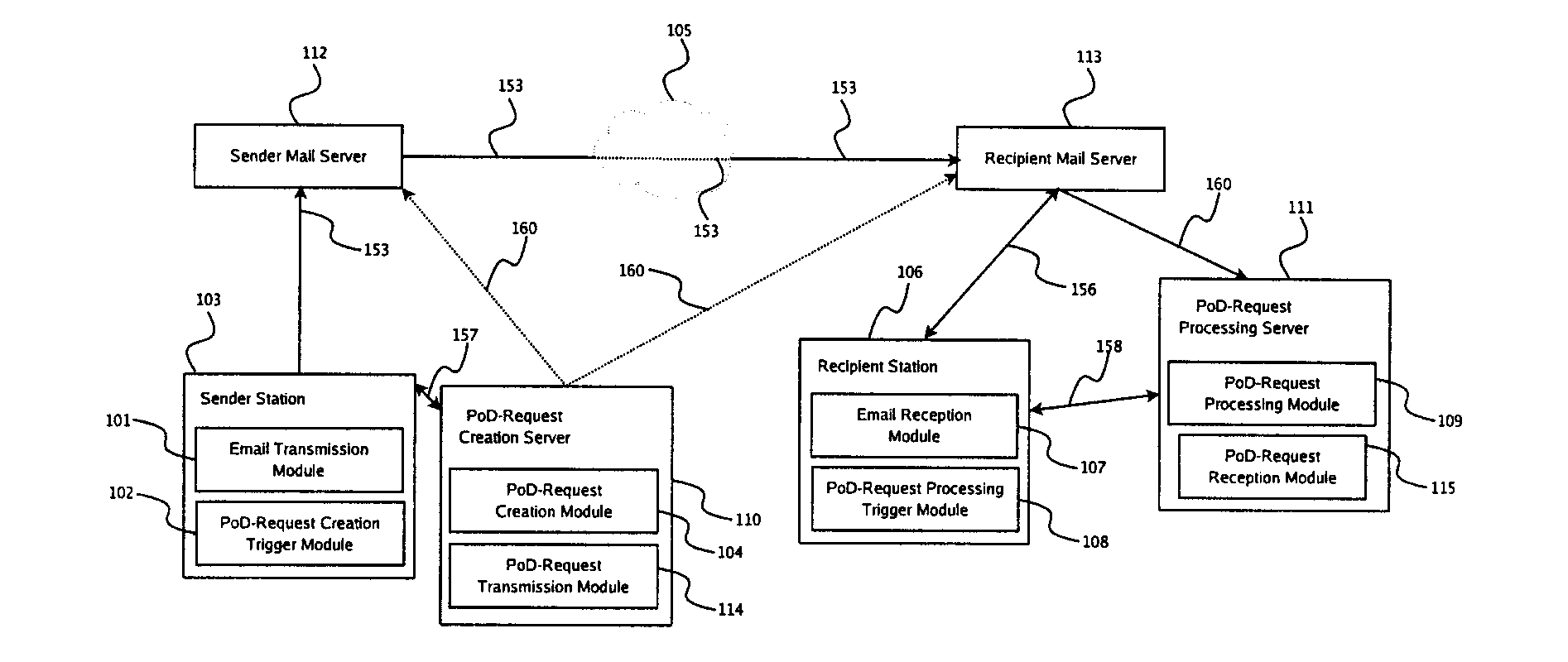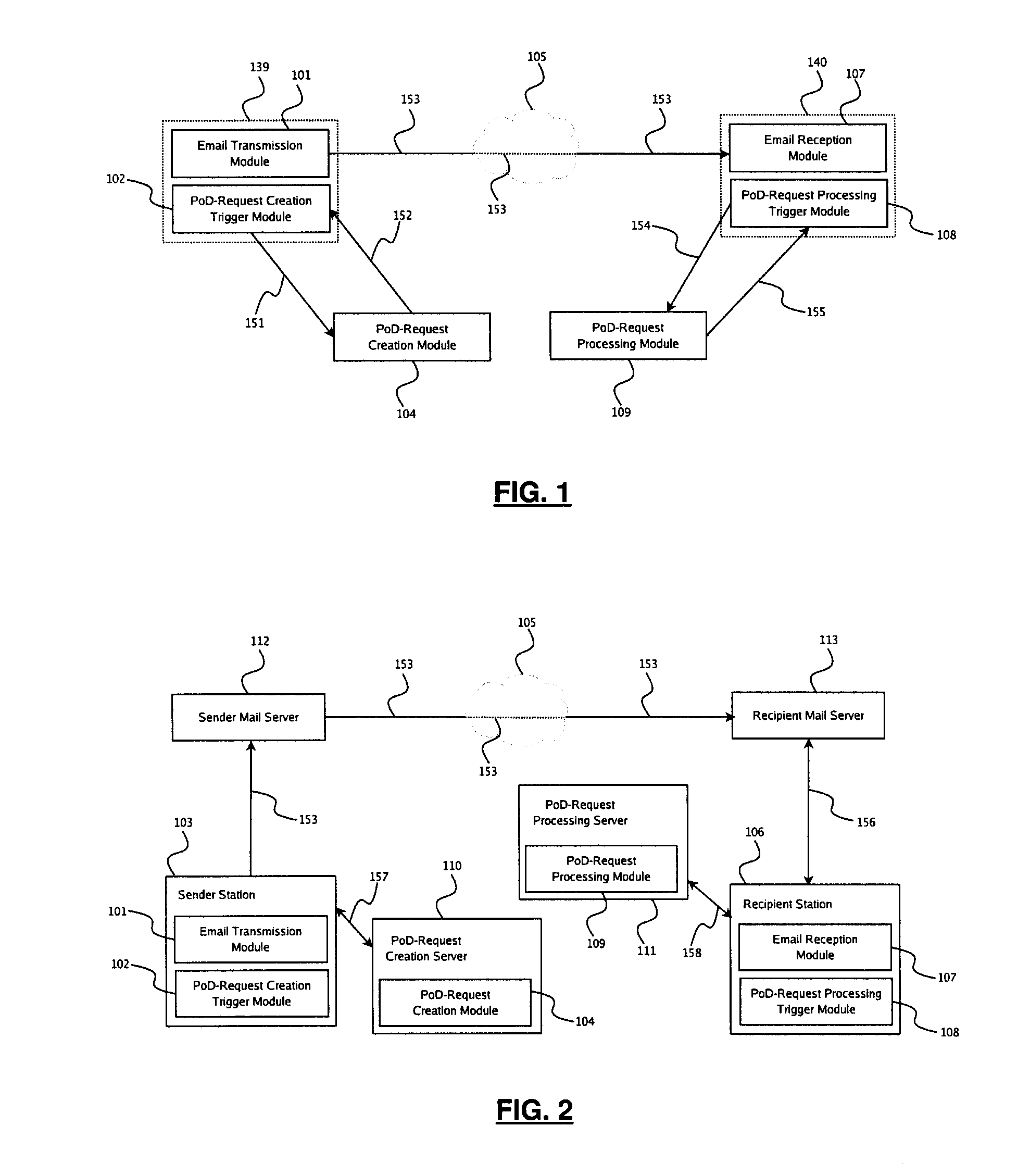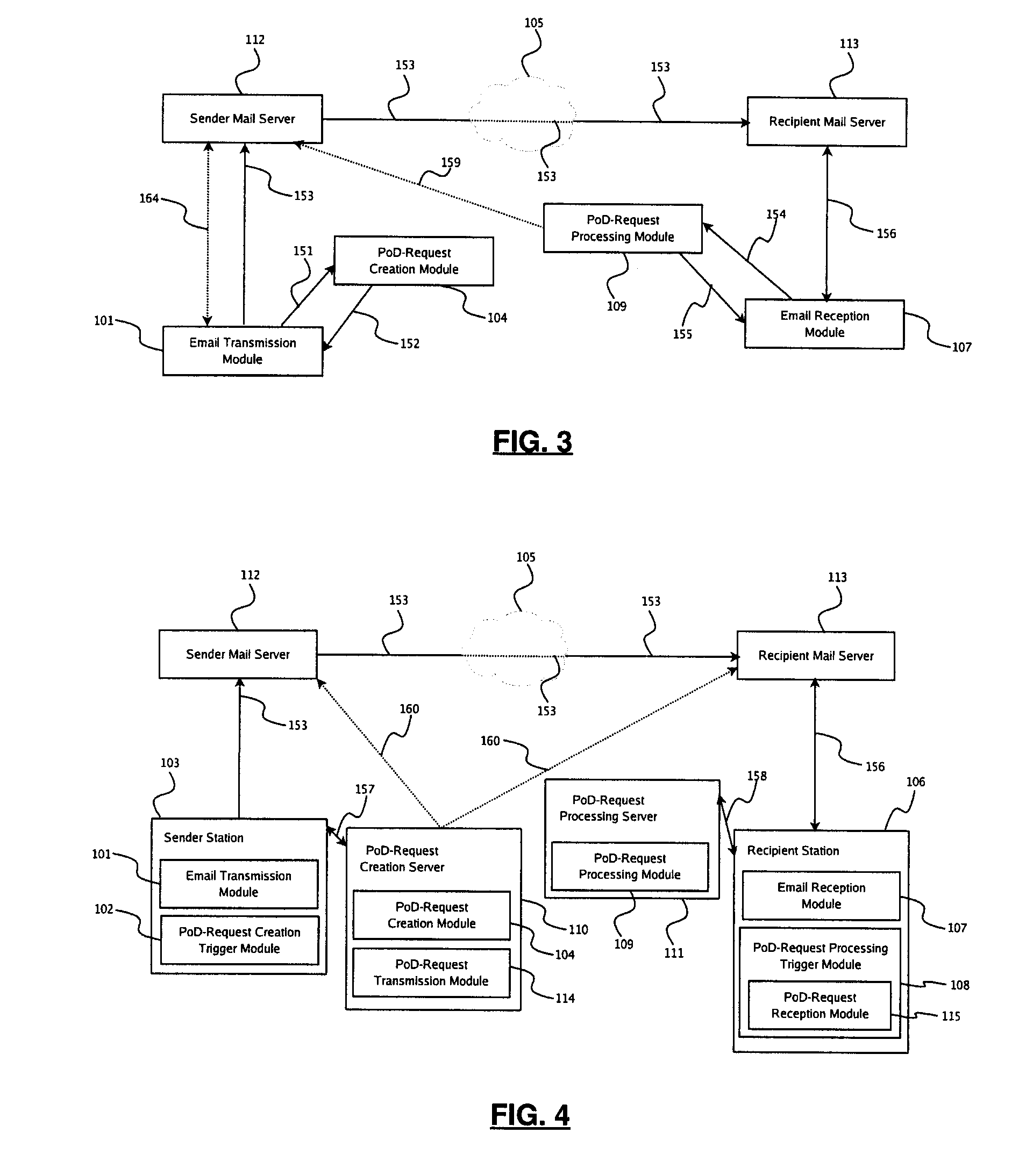System and Method for Providing Certified Proof of Delivery Receipts for Electronic Mail
a certified proof and electronic mail technology, applied in the field of data processing, can solve problems such as the failure to affect the existing email infrastructure, and achieve the effect of avoiding the impact of failur
- Summary
- Abstract
- Description
- Claims
- Application Information
AI Technical Summary
Benefits of technology
Problems solved by technology
Method used
Image
Examples
embodiments
Fourth Set of Embodiments
[0157]FIGS. 11 to 20 illustrate the present disclosure as embodied by the line of products and services marketed by Kryptiva Inc. For the purposes of the present disclosure, Kryptiva Inc. can be typically considered as a TTP with regards to those using its services and components. As such, access to any of the Kryptiva™ components typically involves entering in an agreement with Kryptiva Inc. or obtaining software from it, such as through its website (http: / / www.kryptiva.com). As illustrated in FIG. 13, the above-described elements can be viewed as built into the Kryptiva™ components in the following fashion:[0158]the proof-of-delivery-request creation trigger module 102, proof-of-delivery-request processing trigger module 108, proof-of-delivery-receipt acknowledgment module 118 and email recanting module 119 being integrated in the Kryptiva Mail Operator (KMO) 123,[0159]the proof-of-delivery-request transmission module 114 and proof-of-delivery-request rece...
PUM
 Login to View More
Login to View More Abstract
Description
Claims
Application Information
 Login to View More
Login to View More - R&D
- Intellectual Property
- Life Sciences
- Materials
- Tech Scout
- Unparalleled Data Quality
- Higher Quality Content
- 60% Fewer Hallucinations
Browse by: Latest US Patents, China's latest patents, Technical Efficacy Thesaurus, Application Domain, Technology Topic, Popular Technical Reports.
© 2025 PatSnap. All rights reserved.Legal|Privacy policy|Modern Slavery Act Transparency Statement|Sitemap|About US| Contact US: help@patsnap.com



